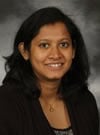Ashim Chakravarty
Physics Department
Michigan Technological University
Thursday, February 23, 2012
4:00 pm, Fisher 139
Xiaoliang Zhong
Physics Department
Michigan Technological University
Thursday, February 23, 2012
4:00 pm, Fisher 139
Each spring, GSG sponsors the Graduate Research Colloquium Poster & Presentation Competition. Poster Presentations in physics include (view the abstract list):
- “Thallium Doping of (PbSn).5Te.5 and Iodine Doping of PbTe to Create More Efficient Thermoelectric Materials” by MICHAEL ADLER (Physics Undergraduate Major)
- “Computational Prediction of the Behavior of MOF-74 Under Hydrated Conditions” by ANDREW J. KENNEDY & LOREDANA VALENZANO (Assistant Research Scientist)
Event Photos and Videos
Flickr Photos
Photos courtesy of the College of Engineering.
Kelken Chang
Physics Dept.
Michigan Tech University
Thursday, February 16, 2012
4:00 pm, Fisher 139
 Physics graduate student Saikat Mukhopadhyay is a recipient of a Finishing Fellowship from the Michigan Tech Graduate School. The fellowships provide support to PhD candidates who are close to completing their degrees; they are available through the generosity of alumni and friends of the University.
Physics graduate student Saikat Mukhopadhyay is a recipient of a Finishing Fellowship from the Michigan Tech Graduate School. The fellowships provide support to PhD candidates who are close to completing their degrees; they are available through the generosity of alumni and friends of the University.
 Engineering Physics graduate student Neluka Dissanayake is a recipient of a Finishing Fellowship from the Michigan Tech Graduate School. The fellowships are intended to recognize outstanding PhD candidates who are in need of financial support to finish their degrees and are also contributing to the attainment of goals outlined in The Michigan Tech Plan.
Engineering Physics graduate student Neluka Dissanayake is a recipient of a Finishing Fellowship from the Michigan Tech Graduate School. The fellowships are intended to recognize outstanding PhD candidates who are in need of financial support to finish their degrees and are also contributing to the attainment of goals outlined in The Michigan Tech Plan.
 The Michigan Tech chapter of the Society of Physics Students (SPS) has been selected as one of the 2011 Outstanding SPS Chapters. This is the second year in a row that the local chapter has earned such a distinction from the Zone Councilors and Associate Zone Councilors.
The Michigan Tech chapter of the Society of Physics Students (SPS) has been selected as one of the 2011 Outstanding SPS Chapters. This is the second year in a row that the local chapter has earned such a distinction from the Zone Councilors and Associate Zone Councilors.
This chapter is part of Zone 09, which includes Illinois, Indiana, Upper Michigan, and Wisconsin. Award selection criteria include involvement with national meetings, outreach effort, community service, interaction with alumni, student recruitment, and more.
According to the Zone Councilors & Associate Zone Councilors, “This chapter makes a great push to keep alumni involved, while still looking towards the future and actively recruiting new members.”
“Our major is not easy, and we work together in order to make the times more fun, as Physics is our passion, and though it can be frustrating at times, we want nothing more than for our students to want to get a career in Physics.”
Professor Miguel Levy (Physics) has been named a Fellow of The Optical Society, which brings together scientists, engineers, educators, technicians and business leaders in the fields of optics and photonics. Election to the rank of Fellow is based on outstanding contributions to optics through accomplishments in science and engineering, technical leadership and impact on the optics community. Levy was recognized for outstanding and fundamental contributions in the areas of magneto-optic and opto-electronic films, and extensions of the theory and applications of magneto-optic photonic crystals.
Michigan Tech has nominated four undergraduates for 2012 Barry M. Goldwater Scholarships. Physics major Ben Malec is one of the nominees. Malec tracks particles in a turbulent fluid in which gravitational settling also plays a role. He hopes to apply what he learns to better understand the behavior of clouds.
